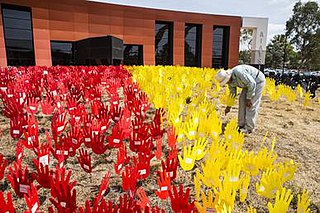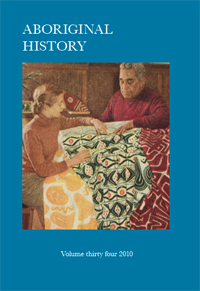This page is based on this
Wikipedia article Text is available under the
CC BY-SA 4.0 license; additional terms may apply.
Images, videos and audio are available under their respective licenses.
The Bakanambia, also known as the Wanbara, are an Aboriginal group of Australia. Traditionally, the Bakanambia lived in the vicinity of Princess Charlotte Bay in the state of Queensland. One of the ethnonyms applied to them was Lama Lama, which is now used of a larger aggregation of remnants of several tribes.
The Barungguan are an indigenous Australian people of the Cape York Peninsula of Northern Queensland. The name is associated with three languages, Ganganda, Umpithamu and Morrobolam.
The Olkolo or Koko-olkola' are an Indigenous Australian people of central and eastern Cape York Peninsula in northern Queensland. According to Norman Tindale, they are to be distinguished from the Kokangol, higher up on the Alice River watershed.
The Totj were an indigenous Australian people of far northern Queensland.
The Goeng or Goeng Goeng were an indigenous Australian tribe of the state of Queensland. They lived in the area of the area of present day Gladstone.
The Mutumui were an indigenous Australian people of northern Queensland.
The Walmbaria are an indigenous Australian people of Cape York Peninsula in northern Queensland.
The Wikampama were an indigenous Australian people of Cape York Peninsula in northern Queensland.
The Kokobididji were an indigenous Australian people of the state of Queensland.
The Gugu Rarmul were an indigenous Australian people of the state of Queensland, one of several whose speech was called Gugu Yawa.
Yadaneru, also written Jeteneru, refers to a tribe at one time thought to have existed in the Cape York Peninsula of northern Queensland.
The Laia were an indigenous Australian people of the state of Queensland.
The Wiknatanja were an indigenous Australian people, one of the Wik tribes of the Cape York Peninsula of northern Queensland.
The Wik Paach or Wikapatja were an indigenous Australian people of the Cape York Peninsula of northern Queensland.
The Wikatinda were an indigenous Australian people of the Cape York Peninsula of northern Queensland. They were one of the Wik peoples, but their language is unattested.
The Julaolinja were an indigenous Australian people of the state of Queensland.
The Yangaa were an indigenous Australian people of the state of Queensland. They may be the same as the Nyangga. They are not to be confused with the Yangga.
The Kunggara, also known as Kuritjara, are an indigenous Australian people of the southern Cape York Peninsula in Queensland.
The Malintji were an indigenous Australian people of the state of Queensland.
The Kokomini (Gugumini) are reported to have been an indigenous Australian people of the state of Queensland, though some indications suggest the term may refer to a loose confederation of tribal groups.





